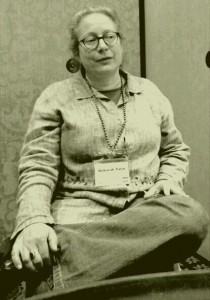Here’s an experience you might remember from your childhood or that of someone you know: you’re five, maybe six years old, and you see a clock on a kitchen table. Or in my case, I’m 10 and it’s the transistor AM/FM radio my parents gave me for Christmas. You are just itching to know how it works, so you figure that you’ll take it apart and see what’s inside, and then you’ll put it back together. And so you pry off the back and you start taking out the components, one by one, and it seems pretty simple until
…you see all of the pieces on the table and they seem to have multiplied and you hear footsteps and you are trying to put it all back but you can’t remember how it goes and it looks like there are too many parts or not enough and then a parent’s voice says, what are you doing?? And you look up in fear because you know that you are in trouble.
Or at least you would be in trouble, unless you happened to have Malachi Munroe’s dad. Malachi, who is 12 and hails from Miami Florida, said that when his father, a computer store owner, found his six-year-old son dismantling cell phones, he taught him how to put them back together correctly. That led Malachi to establish an electronics repair business, a public speaking career and a new booklet offering tips and advice to iPhone users. He says it’s the first in a series of publications that will include similar advice for Android and Blackberry owners. During the interview, he put his skills to work by digging in and fixing a problem I’d been having with my phone.
I met Malachi and his Aunt, Ionnie McNeil, at a Philadelphia hotel August 5 during the National Association of Black Journalists Convention. Aunt Ionnie, 21, is pretty interesting in her own right – she started investing at age 9 and now runs The Baby Billionaire, which seeks to educate young people about investing. In the interview that follows, I wanted to understand how they became motivated to pursue technology and investing at such a young age. Their answers are revealing.
These young people demonstrate precocious knowledge, maturity and focus. I look forward to hearing your reactions.
Other interviews:
- Tatianah Greene, NABJ Monitor, “‘Little Professor” Publishes First Book at Age 12.”
- MyFoxDC, “Tech Whiz Kid Malachi Muroe With the ABCs of Technology“

